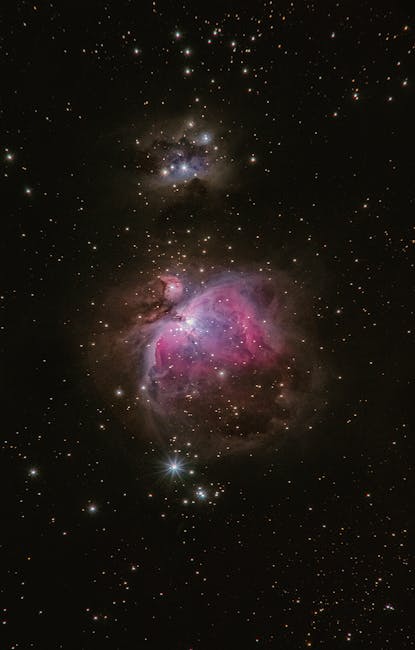
Cosmology: Observations
Cosmology is the study of the Universe, from the beginning of time to the present day. As such, it relies heavily on observational evidence to build a picture of how the Universe developed and continues to evolve. Here, we take a look at some of the important observations and techniques used in cosmology.
Redshift and Doppler Effect
The Doppler effect is a phenomenon that occurs when a wave’s frequency and wavelength change due to change in the relative velocity of the source and the observer. In cosmology, the Doppler effect can be observed in the emitted light from distant galaxies.
Light from those galaxies will be seen as “redder” — shifted towards the longer, red wavelengths — when the galaxies are moving away from us, and “bluer” — shifted towards the shorter, blue wavelengths — when the galaxies are moving towards us. This phenomenon is known as the redshift of light and is used to determine the velocities of distant galaxies relative to our own.
Distance Measurement
Determining distances in the Universe is vital in cosmology, as far away objects provide us with information about the Universe’s past. Astronauts use several methods to measure these distances, such as:
- Standard candles. Standard candles are sources of known brightness, such as certain types of stars or supernovae. Based on their observed brightness, we can calculate the distances these objects are away from us.
- Cepheid variables. Cepheid variables are stars whose brightness varies from time to time. We use the period of the brightness variations to estimate the luminosity of the star, and then use the luminosity and the star’s observed brightness to estimate its distance.
- Redshift. We can also use redshift to measure distances, as redshift increases with distance. By measuring the redshift of a galaxy, we can get an estimate of its distance from us.
Cluster Detection
Clusters of galaxies are key components of cosmology, as they can provide us with insight into the processes of galaxy formation and evolution. Astronomers build up a picture of galaxy clusters by detecting the galaxies within them, using telescopes and other instruments.
X-ray and radio telescopes are useful in detecting hot gas and emissions from galaxies, while optical telescopes can reveal the galaxies themselves. Astronomers then analyse the collected data and combine it with other observations to determine the total mass and other salient features of the cluster.
The Microwave Background
The cosmic microwave background (CMB) is another important tool in cosmology. The CMB is a remnant of the Big Bang and is made up of radiation that permeates all of space. By studying the CMB, we can gain an insight into the Universe from the earliest times and how it has changed since then.
Current observations have revealed some important features of the CMB, such as its uniform temperature, slight deviations from a uniform temperature, and polarization. All of these features can tell us a great deal about the structure and history of the Universe.
Conclusion
Observations are an integral part of cosmology, helping us to build a picture of the Universe and its evolution. Redshift, distance measurement, cluster detection, and the cosmic microwave background are just some of the techniques used in cosmology. With new discoveries and more data from existing observations, cosmologists can continue to add to our understanding of this vast and ever-evolving Universe.
Cosmology is a subset of astrophysics that studies the origin, structure, evolution, and ultimate fate of the universe. As a result, cosmologists must rely on observations to form a theory of how our universe was formed and how it works.
Since the 1970s, we have been able to observe the cosmic microwave background, which is the afterglow of the universe’s formation caused by a primeval fireball of radiation. This radiation was measured using balloon-borne and ground-based experiments. Over the last 40 years, this has given scientists a better understanding of the universe’s origin and expansion.
More recently, Hubble Space Telescope observations have allowed us to probe the stars and galaxies in the universe. By accurately measuring the redshift of these galaxies, cosmologists are able to determine the universe’s expansion rate – and in turn further inform ideas about its origin and evolution.
Other experimental methods used to observe the universe are gravitational lensing and supernovae observations. Through the measurements of gravitational lenses and time delays, cosmologists are able to measure the relative amount of mass in galaxies and clusters. This gives us a better understanding of the dark matter and dark energy in our universe. Supernovae observations are also useful, as they allow us to measure the distances of far away galaxies and determine their brightnesses.
All of these observations provide new insights into the origins, structure, and ultimate fate of our universe. Through these observations, we can form hypotheses and test them to gain a deeper understanding of our universe, and how it works.
